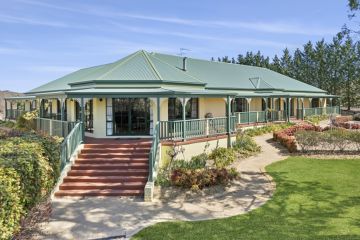All in the plan for vibrant city life: Tony Trobe speaks to PIA president Michael Jollon
Tony Trobe talks to Planning Institute president Michael Jollon.
TT: The general public may not understand the role of planners. As president of the ACT division of the Planning Institute of Australia, can you give me an overview?
MJ: Planning is the process of making decisions to guide future action. Our profession is focused on the spatial relationships of human activity, how people live on the land. We shape cities, towns and regions by managing development, infrastructure and services. Our work – often called “urban” or “town” planning – often involves forming policies, plans or approvals for development.
It is not just buildings and design, planners also focus on social interactions that explain how places are organised, governed, and what happens in them. One important issue . . . is the formal and informal ways people can shape the built environment. Planners work across projects, space and time to ensure the development of attractive, healthy, and safe places that communities and people care about.
Planners can specialise in diverse areas including social planning, environment, heritage, conservation and transport. Planners in Canberra work across the ACT government, but also in many Commonwealth departments and private practice.
TT: Where does the architecture stop and the planning start?
MJ: Of course, many professionals including architects help shape our cities. For example, developers, architects and landscape architects may decide what is built on a block, and urban designers and engineers can guide choices for many public projects. Planners are concerned with a larger picture; how all these designs work together, across block boundaries, around the corner, across town, and in the long run.
Good outcomes are based on understanding that each profession is best suited to making decisions within its own area of interest. Planning should not be left to developers, just as bridge design shouldn’t be left to planners.
TT: What do planners see as key issues facing Canberra?
MJ: PIA members are interested in the ACT’s big initiatives like light rail, urban renewal in the major centres and bringing the city to the lake. These will be transformative projects for Canberra. Getting them right will have major impacts on city life for generations to come. We are taking special interest in efforts to achieve denser land use while simultaneously improving the quality of the built environment.
But these are not the only issues facing our city. Planning considers all impacts of development, including social isolation, housing affordability, access to services, and environmental concerns such as climate change and habitat loss for threatened species. These are real issues as Canberra grows “up” with urban infill, but also “out” towards the Murrumbidgee River and towards our border with NSW. We also hope to see stronger intergovernmental planning and co-operation in our growing region.
TT: How does your institute support its planners in achieving these objectives?
MJ: PIA provides professional development and networking opportunities for anyone interested in the built environment. We represent the profession in numerous consultations with territory and Commonwealth governments, and participate in campaigns with allied professional and interest groups. This year, we are looking to engage directly with the community and professionals through public events and activities.
To get involved with the ACT division of the Planning Institute of Australia, please visit http://www.planning.org.au/act or email act@planning.org.au
Tony Trobe is director of local practice TT Architecture.
Is there a planning or design issue in Canberra you’d like to discuss? Email tonytrobe@ttarchitecture.com.au
We recommend
States
Capital Cities
Capital Cities - Rentals
Popular Areas
Allhomes
More







